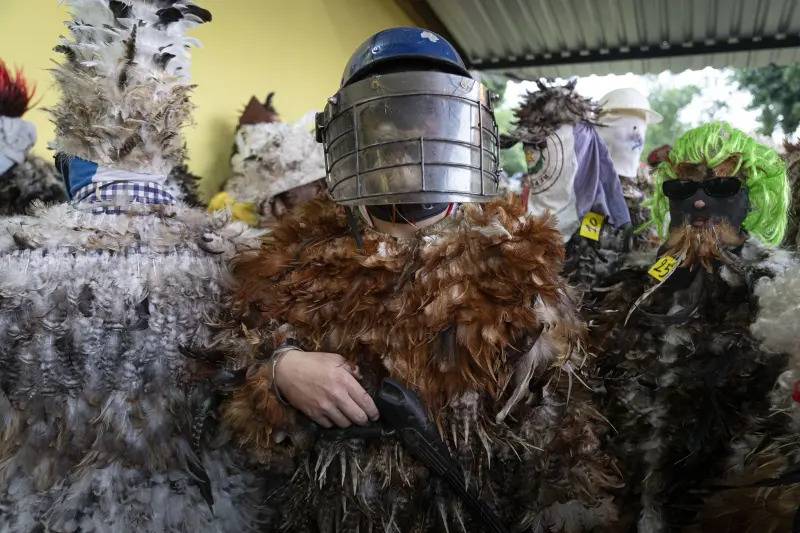Birds of a feather—and strong devotion

EMBOSCADA, Paraguay—The rainy weather did not prevent Blanca Servín from dressing her 7-year-old son like a bird. They joined a procession honoring St. Francis Solanus, the patron saint of a town in Paraguay about 32 kilometers (20 miles)from the capital city of Asunción.
Like her child, dozens of Catholics in Emboscada wear elaborate feathered garments each July 24. Dressing up is a ritual aimed at fulfilling promises made to the Spanish friar, who was a missionary in South America during the 16th century and is believed to grant miracles.
“I couldn’t have children,” Servín said. “I underwent several treatments and when I finally got pregnant and my child was born, the doctors said he would barely live for a few days.”
She then prayed to St. Francis Solanus and made a promise many parishioners make: If you do this for me, I will honor you on your feast day for seven years.
“My son is almost 7, and I have kept my promise,” Servín said. “But we will keep coming.”
Participants dressing up in feather garments are known as “promisers.” As part of the rituals, they cover their faces, imitate birds and distort their voices when speaking.
Hens, guinea fowls, geese
Marcos Villalba said he spent three months crafting his costume, while Sulma Villalba – not related to Marcos—devoted six months to the task.
Rather than wearing a costume herself, Villalba patiently glued hundreds of feathers to her children’s and husband’s clothing. Like Servín, she has fulfilled the promise she made to St. Francis to protect her family.
Ancient context
According to Ireneo López, a layperson in charge of recreational activities at the Emboscada parish church, St. Francis is remembered as a missionary who evangelized the Indigenous people through music. The first church in his honor was erected in the 1930s.
López said that participants use up to 30 hens, guinea fowls and geese to craft their costumes.
“These garments represent what people used to wear in ancient times,” he added. “Gala suits were made with what nature provided: birds.”
Processions and dances honoring St. Francis start on July 22. On July 24, promisers and parishioners attend Mass at the St. Francis chapel, then lead a procession and end up dancing in front of the church.
According to historian Ana Barreto, the ancient context of the feast is as fascinating as the feast itself. It is celebrated in a territory that was disputed by two indigenous people—the Guaraní and the Chacoan—before the Spaniards came in the 16th century.
The Europeans eventually subdued the Guaraní, but the Chacoan kept defending the land even after descendants of formerly enslaved people from Africa settled there.

















